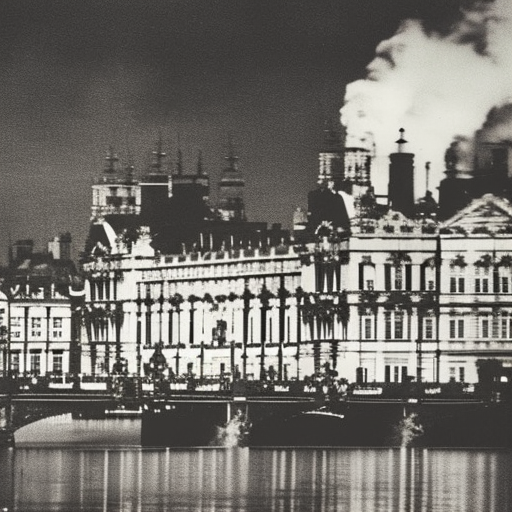The Great Fire of London: A Catastrophic Event that Shaped the City’s History
The Great Fire of London was a devastating event that occurred in 1666, engulfing the city in flames for several days. It started on September 2nd in a bakery on Pudding Lane and quickly spread due to strong winds and the city’s narrow, crowded streets. The fire raged on until September 6th, causing widespread destruction and leaving a lasting impact on the city’s architecture and infrastructure.
The Spark and the Spread
The fire began in the bakery of Thomas Farriner, the king’s baker, when a spark ignited some nearby straw. The flames rapidly spread to the surrounding buildings, which were predominantly made of wood and thatched roofs. The strong winds blowing from the east further fueled the fire, causing it to spread quickly throughout the city.
Despite efforts to control the fire, the lack of an organized firefighting system and the narrowness of the streets hindered the firefighters’ progress. The fire continued to spread, consuming numerous buildings, including St. Paul’s Cathedral and many other prominent landmarks.
The Destruction
The Great Fire of London caused immense destruction, with an estimated 87 churches, 13,200 houses, and numerous other buildings reduced to ashes. The fire also claimed the lives of several people, although the exact number is uncertain. The destruction was so extensive that it left an estimated 100,000 people homeless.
Rebuilding the City
In the aftermath of the fire, the city faced the daunting task of rebuilding. Architect Sir Christopher Wren played a crucial role in the reconstruction efforts, designing new churches and public buildings. The new structures were built using brick and stone instead of wood, which significantly reduced the risk of future fires.
The rebuilding process also led to the creation of wider streets and improved sanitation systems. The city’s layout was redesigned, with a focus on reducing the risk of fire and improving overall living conditions. The new cityscape that emerged from the ashes of the Great Fire of London laid the foundation for the modern city we see today.
Impact on Fire Safety
The Great Fire of London had a profound impact on fire safety measures. The fire highlighted the need for a more organized firefighting system, leading to the establishment of the first professional fire brigade, known as the London Fire Engine Establishment, in 1667. This marked a significant step forward in fire prevention and response.
Additionally, regulations were introduced to improve fire safety, such as the requirement for buildings to be constructed with brick or stone and the banning of thatched roofs. Fire insurance also became more prevalent, with the creation of the first fire insurance company, the Fire Office, in 1680.
Legacy and Commemoration
The Great Fire of London left a lasting impact on the city’s history and culture. The event has been commemorated through various monuments and memorials, such as the Monument to the Great Fire of London, which stands near the site where the fire started. The fire has also been the subject of numerous works of literature and art, capturing the magnitude and significance of the event.
In conclusion, the Great Fire of London was a catastrophic event that caused widespread destruction and reshaped the city’s landscape. The fire led to significant changes in architecture, infrastructure, and fire safety measures. Despite the devastation it caused, the Great Fire of London ultimately paved the way for a safer and more resilient city.












